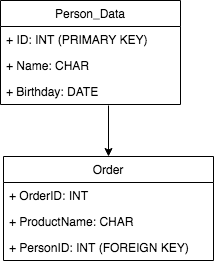Working with relational data models
Hierarchical and Recursive Queries in SQL Server

Jasmin Ludolf
Content Developer
Basics about relational data models
- Database model: a type of data model that determines the structure of a database and in which manner data can be stored, organized, and manipulated.
The relational database model is the most widely used database model, which is the standard in database development.
A relational data model consists of:
- Tables
- Attributes
- Relations
- Relational algebra
Tables and attributes
Properties:
- Every table has a name (e.g., Personal_Data)
- Each column describes an attribute (e.g., ID, Name, Birthday)
- Each row consists of data
| ID | Name | Birthday |
|---|---|---|
| 1 | Adam Smith | 1.3.1978 |
| 2 | Anna Jones | 23.8.1991 |
| 3 | Paul Williams | 2.5.1954 |
| 4 | Jessica Anderson | 2.5.1954 |
Create relations
A relation is created by:
- primary key
- foreign key
Properties of primary keys:
- unique
- each row has a primary key
Properties of foreign keys:
- primary key of another table
Example: Order history

Define primary and foreign keys
Primary key:
fieldName fieldType NOT NULL PRIMARY KEY,
e.g., for table Person_Data:ID INT NOT NULL PRIMARY KEY
Foreign key:
fieldName fieldType FOREIGN KEY REFERENCES tableName(primaryKey)
e.g., newID INT FOREIGN KEY REFERENCES Person_Data(ID)
Relational algebra
Relational algebra is a formal language for relational databases and makes it possible to form a new relation from two or more relations.
Examples:
SELECTUNIONDIFFERENCEJOIN
Let's practice!
Hierarchical and Recursive Queries in SQL Server

